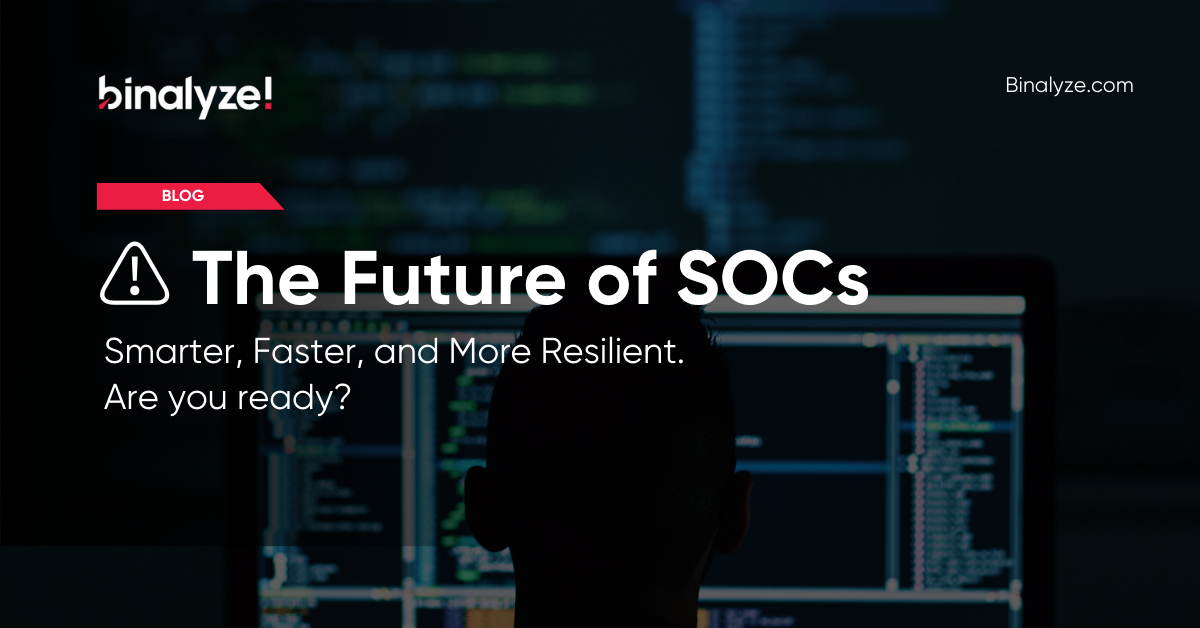
Security Operations Centers (SOCs) are evolving. The traditional model—reliant on alert-driven workflows and manual, cumbersome investigations—is struggling to keep up with the complexity and volume of cyber threats. The SOC of the future must be faster, smarter, and more resilient, embracing efficiency driving automation, forensic insights, and seamless integration across security tools.
This is where Automated Investigation and Response steps in—bridging the gap between detection and response to elevate SOC capabilities and empower SOC teams.
Why Traditional SOCs Are Falling Behind
Alert Overload & Tool Sprawl – SOC analysts are buried in alerts from monitoring and detection tools, including SIEM, XDR, and EDR platforms, leading to alert fatigue and missed threats.Slow & Fragmented Investigations – Cumbersome data collection, correlating evidence across multiple tools and working a lead in point investigative solutions, results in lengthy or inconclusive investigations days or even weeks, delaying response times to days, weeks or months.
Skills Shortages & Analyst Burnout – With 64% of analysts spending over half their time on repetitive tasks, missing out on skills uplevelling opportunities and resulting in major turnover issues. Lack of End-to-End Visibility – Detection tools alone lack the forensic depth and historical view, leaving analysts to manually piece together fragmented evidence or worse, rely on inconclusive, incomplete data.
Reimagining SOCs: The Key to Future Resilience
SOC transformation is about more than just technology—it’s about how teams operate. The future SOC must:
✅ Shift from Tiered Teams to Skill-Based Roles – Traditional tiered SOC structures confine analysts to the same repetitive workflows, limiting their exposure to different challenges. A more agile and collaborative model allows teams to engage with a variety of workflows and security scenarios, fostering continuous learning, adaptability, and deeper expertise—ultimately creating a stronger, more resilient SOC.
✅ Balance Standardization & Flexibility – Consistent, well-defined processes are essential in incident response for speed, auditability, and seamless onboarding. Standardization ensures investigations are repeatable and efficient, but rigid playbooks alone aren’t enough. Analysts must have the means to apply their experience, business context, and intuition when handling complex or evolving threats.
✅ Automate & Optimize – The future SOC is built on a Human-Computer Symbiosis, where AI and automation reduce manual workloads, enhance decision-making, and speed up incident resolution. By combining machine efficiency with human expertise, SOC teams can work smarter, respond faster, and stay ahead of evolving threats.
How Binalyze Automated Investigation and Response (AIR) Powers the Future SOC
Reduces alert fatigue and investigation delays – AIR automates forensic cross-platform data collection and integrates seamlessly with SIEM, XDR, and EDR, ensuring forensic evidence is immediately available when an alert fires, reducing time to actionable insights.
Brings forensic capabilities earlier into the SOC workflow – Instead of confining investigations to specialized tiers, AIR enables all analysts harness the power of forensic data from alert validation, supporting a skill-based SOC model where teams engage more deeply with investigations rather than just triaging alerts.
Delivers end-to-end forensic investigations at speed and scale – SOC teams need to investigate efficiently across an expanding attack surface. AIR automates forensic acquisition across hybrid, transforming environments, reducing time to evidence and insights from days to minutes.
Optimizes SOC efficiency with automation – Manual evidence gathering is time-consuming and error-prone. AIR automates repetitive investigative workflows, allowing analysts to focus on decision-making and high-value response efforts instead of data collection.
Ensures collaboration and visibility across the SOC – Siloed tools slow down response. AIR’s Investigation Hub provides a single-pane view of forensic evidence, enabling real-time collaboration, shared workflows, and streamlined case management across teams.
Supports a future-proof SOC strategy – As threats evolve, so must the SOC. Investigations can no longer be purely reactive. Binalyze AIR’s built-in compromise assessment capabilities and automation enable proactive use cases, allowing SOC teams to move beyond just responding to alerts. With the ability to continuously validate security posture, hunt for emerging threats, and uncover hidden risks, AIR ensures the SOC remains adaptable, resilient, and always a step ahead.
The Bottom Line: Future-Proof Your SOC with Binalyze AIR
The future SOC is about creating a more resilient and effective security operation. By embedding forensic intelligence earlier, reducing investigation delays, and optimizing workflows through automation, SOC teams can operate with greater speed, precision, and confidence. A SOC built on accessibility, efficiency, and collaboration is not just responding to threats. It is proactively managing risk and ensuring business continuity in an ever-evolving threat landscape.
Ready to transform your SOC? Book a demo at Binalyze.com










